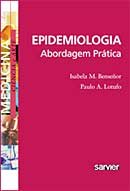
Abaixo, encontra-se carta publicada no The Lancet Neurology a respeito da vigilância epidemiológica da doença que mais mata no Brasil, mas ainda é muito pouco estudada: a doença cerebrovascular. Apresentamos as bases do EMMA (Estudo de Mortalidade e Morbidade do Acidente Vascular Cerebral) que utiliza a metodologia desenvolvida por Ruth Bonita na Organização Mundial da Saúde. O estudo foi financiado inicialmente pelo Conselho Nacional de Pesquisa e depois pela FAPESP. Completará um ano em maio próximo e, permitirá entender vários aspectos da epidemiologia e clínica das diversas formas da doença cerebrovascular. Clicando o título será possível chegar na página do The Lancet Neurology, mas será necessário registro para acessar o artigo. Ou então, solicitar no email desse blogue.
Lancet Neurology 2007; 6:387-388
Improving WHO STEPS Stroke in Brazil
Paulo A Lotufo and Isabela M Bensenor Further to your editorial and the article by Truelsen and colleagues, which emphasise the importance of WHO STEPS Stroke methodology for cerebrovascular disease surveillance, we would like to comment on our experience with regard to the use of this surveillance tool.
The rationale for studying cerebrovascular epidemiology in a country like Brazil is obvious, but paradoxically, there are few researchers focusing on clinical and epidemiological research about stroke. Death rates from cerebrovascular and coronary heart diseases surpassed those for infectious diseases in the 1960s and stroke mortality rates in Brazil are the highest in Latin America. However, most vascular research in Brazil is focused on coronary heart disease rather than stroke. There is a simple reason for this discrepancy: mortality due to stroke is twice as common among people living in neighbourhoods with low socioeconomic indicators than in those in more affluent ones. In the past 40 years, coronary care units have spread across the country; by contrast, there are no public stroke units. Patients with stroke are treated in emergency wards, and hospitalisation in a critical care unit is not considered a priority. Thrombolysis is common for patients with acute coronary syndromes but is unavailable for people with ischaemic stroke.
By contrast with classic surveys located in small towns, our aim is to assess stroke distribution in São Paulo, a large metropolitan area with more than 10 million inhabitants. We chose the neighbourhoods located in the western area of the city, in which a teaching hospital with a 260-bed facility offers the only support for emergencies and is responsible for 80% of the hospitalisations of people living in the area. Here, we launched Estudo de Mortalidade e Morbidade do Acidente Vascular Cerebral (EMMA) study, funded by the Brazilian National Research Council. EMMA enrolled its first participant on May 10, 2006, applying the form proposed for step one of STEPS Stroke. In this phase, objectives are to characterise the delay in hospitalisation since the start of symptoms, to determine the frequency of stroke by hour of the day, day of the week, and month of the year, and to calculate the 28 day, 180 day, and 1 year case-fatality rates.
For step two—which began in November, 2006—we included the assessment of housing conditions, with a detailed assessment of the place in which each stroke survivor lives. Step three, due to start this year, will offer strong support from primary care physicians in the area, mainly community health agents who are working together in the Family Primary Care Program.
In addition to STEPS Stroke, we are implementing other tools to verify motor, speech, and alimentary tract disabilities with specific questionnaires and a clinical consultation with physiotherapists and speech disorder specialists

